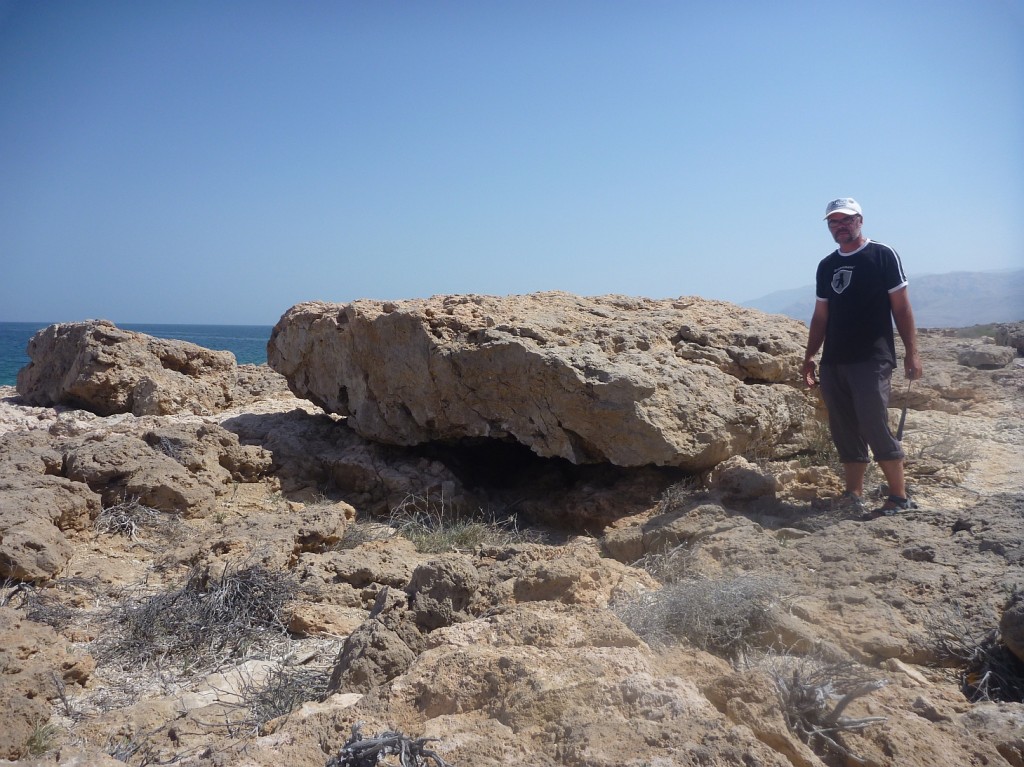Two new tsunami papers have been published recently, and I am happy to be co-author of one of them. In Hoffmann et al. 2012 we report on our observations along the NE Omani coast between Fins and Sur. We found a ridge of imbricated boulders parallel to the coast, but in heights of several meters above m.s.l. on top of a cliff and dozens of meters inland. Also, extremely large blocks clearly stemming from the cliff were found. We used LiDAR to determine the mass of very large blocks (up to 40 t) and found this method to result in far lower weights than estimated with the classical method.

Imbricated blocks of medium size can be found along the entire coast between Fins and Sur, see hammer for scale.
Blocks of this size can hardly be moved by storm events, and the last devastating tropical cyclones that hit the study area (Phet and Gonu) did not move even much smaller blocks at all as we proved by comparing aerial imagery. We conclude that an extreme wave event, most likely a tsunami, is necessary to provide the wave height and energy to cause the boulder accumulations.

The authors (without Gösta and Tobi) during field work. The paleoseismicity boyband from left to right: myself, Klaus, Tom
Hoffmann, G., Reicherter, K., Wiatr, T., Grützner, C., Rausch, T., 2012. Block and boulder accumulations along the coastline between Fins and Sur (Sultanate of Oman): tsunamigenic remains? Natural Hazards, DOI:10.1007/s11069-012-0399-7.
New paper on the Tohoku-oki tsunami, Japan, 2011.
Richmond et al. have published new data on the tsunami that devastated Japan in 2011. The authors focus on erosion, deposition and landscape change, and conclude on implications for paleotsunami research. The investigations comprise a kilometre-scaled transect in the Sendai plain close to the airport, perpendicular to the coast. Here, trenches were dug in order to map the sediment distribution. Their study “…revealed that the foreshore recovered quickly with rapid post-tsunami sediment deposition from incident waves, whereas the dune–ridge complex had undergone only minor re-working from eolian processes.” (Richmond et al., 2012)
Richmond, B., Szczuciński, W., Chagué-Goff, C., Goto, K., Sugawara, D., Witter, R., Tappin, D.R., Jaffe, B., Fujino, S., Nishimura, Y., Goff, J., 2012. Erosion, deposition and landscape change on the Sendai coastal plain, Japan, resulting from the March 11, 2011 Tohoku-oki tsunami. Sedimentary Geology (2012), http://dx.doi.org/10.1016/j.sedgeo.2012.08.005.





No Comments
No comments yet.